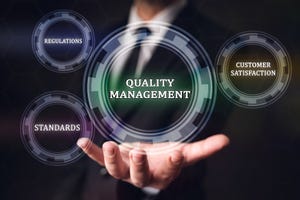6 Key Tips from Medtech Firms Excelling in Consumer Engagement
To build and maintain a successful consumer-facing brand, firms have to skillfully marry medtech requirements with consumer needs.

For medical device companies that are commercializing their products to health-conscious consumers, developing a groundbreaking product is just the beginning. To build and maintain a successful consumer-facing brand, you have to skillfully marry medtech requirements with consumer needs.
As the co-founder and CEO of FastWave Medical and founder of Medsider, I’ve had the privilege of talking to some of medtech’s most well-known names about what it takes to succeed in a consumer-focused medical device business.
Keep reading for my top takeaways on life science entrepreneurs can thrive with their direct-to-consumer approach.
1. ABA – Always build awareness.
Chemical engineer and serial entrepreneur Peter Vranes is the co-founder and CEO of Nutromics, an Australian medtech company that’s developed a wearable smart patch to track molecular targets. The Nutromics patch has the potential to flag early signs of conditions like diabetes, kidney failure, and cardiovascular disease.
Vranes urges entrepreneurs to never stop raising awareness for your company and what you’re building. One of the ways to do this is by utilizing publicized competitions and accelerators as a means to increase the visibility of your products.
2. Balance form and function.
John Mastrototaro, the CEO of Movano Health, with over three decades of experience in the medical device space, emphasizes the importance of aesthetics for wearable devices. His company is pioneering the Movano Ring, a smart ring for women that keeps track of critical health measures.
John’s key lesson is that a consumer device needs to be functional and look appealing at the same time. If your end users don’t like the way your product looks and feels, your chances of success are greatly diminished.
3. Leverage word of mouth.
Jennifer Ernst’s background in translational science – taking groundbreaking research and turning it into a commercial product makes her particularly well-suited to the consumer-facing medtech space. As the co-founder and CEO of Tivic Health, Ernst led the development of the company’s groundbreaking device ClearUP, an OTC handheld device that relieves symptoms of sinus and nasal congestion using gentle pulsed electric waves.
Ernst emphasizes the need to generate support for OTC devices through user reviews and word-of-mouth. The more consumers use and share about your product, the more likely physicians are to recommend it to other patients.
4. De-risk through your supply chain.
Cody Simmons, CEO of DermaSensor, spearheaded the development and commercialization efforts of the world’s first handheld point-and-click skin cancer detection tool, raising more than $27 million to launch their flagship device.
Simmon’s advice for consumer-oriented medtech start-ups? Get all of your manufacturing and supply ducks in a row to help de-risk your company for investors. Financial backers want to see that you have an established manufacturing process, and that you’re prepared to ramp up supply when it comes time to fully commercialize your product.
5. Address known issues in big ways.
Hinge Health President Jim Pursely has spent the last decade tackling the biggest problems in healthcare. Now, he’s pioneering remote technology that makes high-quality musculoskeletal (MSK) care more accessible by allowing caregivers and physical therapists to evaluate patients remotely.
When choosing a market to go after, Pursley encourages entrepreneurs to double down on a known problem with a large TAM. It’s easier to convince end-users to spend money on a more cost-effective solution to a problem they’re already paying for than it is to convince them to invest in a problem they haven’t dealt with yet.
6. A dual commercialization strategy can work.
Sean Saint, the former CEO of Companion Medical (which sold to Medtronic), has more than 20 years of experience in medical devices and various start-ups He’s also living with type 1 diabetes, which gave him indispensable insight when designing Companion Medical’s InPen, a Bluetooth insulin pen that transmits doses and other information directly to the patient’s phone.
For consumer-oriented medtech companies, Saint suggests following a two-pronged approach to commercialization: Aim for direct-to-healthcare provider sales, while also implementing a direct-to-consumer model. Although it may be more resource-intensive, this approach can yield synergistic results.
Key lessons for consumer-centric medical and health technology brands.
Here are some additional takeaways from these groundbreaking consumer-focused entrepreneurs:
Target multiple types of stakeholders.
Understand the power of catering to multiple types of stakeholders by focusing on devices that not only benefit consumers but also provide doctors and researchers with invaluable health data.
Demonstrate value across multiple fronts.
It's not enough to just talk about the value of your product – you have to prove it. Start with a controlled environment like a clinical trial, but don't stop there. Go the extra mile and show how your solution translates seamlessly into the everyday lives of consumers.
Highlight quantifiable cost savings.
Focusing solely on clinical efficacy is a missed opportunity. Understand that quantifiable cost savings are oftentimes just as important as clinical results. Too many medical technology entrepreneurs neglect how their product impacts the economics of healthcare.
About the Author(s)
You May Also Like


.png?width=300&auto=webp&quality=80&disable=upscale)

